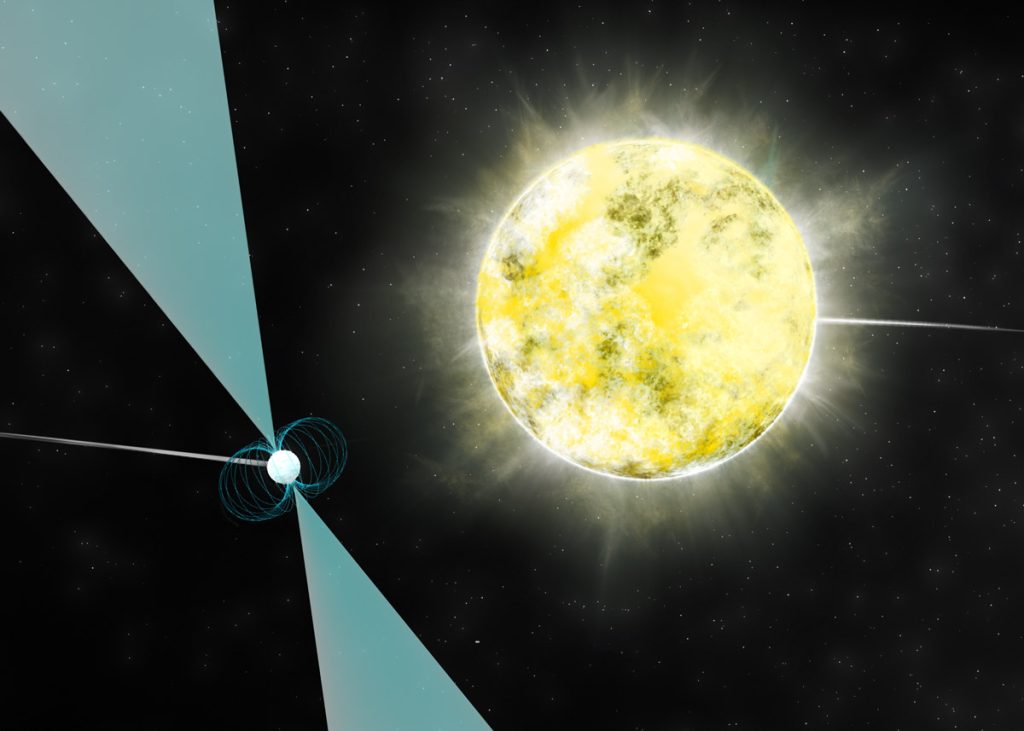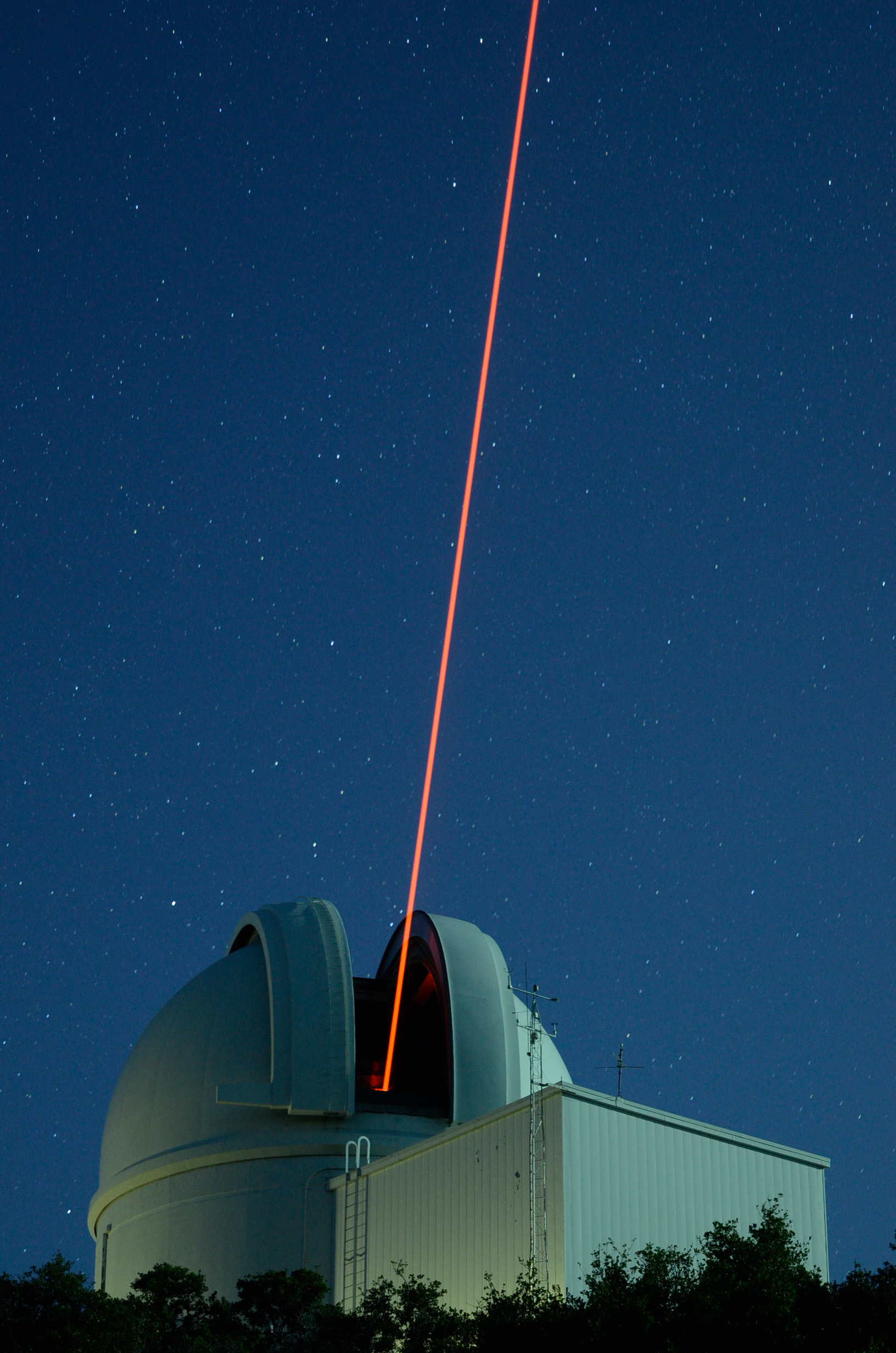
Home → General → Remarkable white dwarf star possibly coldest, dimmest ever detected Remarkable white dwarf star possibly coldest, dimmest ever detected An artist’s conception of a white dwarf star in orbit with pulsar PSR J2222-0137. (Image Credit: B. Saxton, NRAO/AUI/NSF)

UNC astronomers Bart Dunlap and Nicholas Law played a key role in exciting summer 2014 discoveries involving white dwarf stars and exoplanet systems (planets around other stars).
A team of astronomers including Dunlap, a graduate student and research assistant in physics and astronomy, identified possibly the coldest, faintest white dwarf star ever detected. The ancient stellar remnant is so cool that its carbon has crystallized, forming — in effect — an Earth-size diamond in space.
White dwarfs are the extremely dense end-states of stars like the sun that have collapsed to form an object approximately the size of the Earth. Composed mostly of carbon and oxygen, white dwarfs slowly cool and fade over billions of years. The object in the new study is likely the same age as the Milky Way, approximately 11 billion years old.
***
An international team is using the world’s first robotic laser adaptive optics system — Robo-AO — to explore thousands of exoplanet systems at resolutions approaching those of the Hubble Space Telescope.
Law is Robo-AO’s project scientist and an assistant professor in UNC’s department of physics and astronomy. Research assistant Carl Ziegler from UNC also is a member of the Robo-AO team.
The results shed light on the formation of exotic exoplanet systems and confirm hundreds of exoplanets.
Analysis of the first part of the Robo-AO/Kepler survey is already yielding surprising results.
“We’re finding that ‘hot Jupiters’ — rare giant exoplanets in tight orbits — are almost three times more likely to be found in wide binary star systems than other exoplanets, shedding light on how these exotic objects formed,” Law said.
Read more about both discoveries at go.unc.edu/Xx75Z and go.unc.edu/Hq25R.
Published in the Fall 2014 issue | The Scoop
Read More

Geology gift aids professor in research of Alaskan rivers
Elijah White (M.S. ’84) says that his experiences with esteemed…

Shirley Temple Up Close: Q&A with John F. Kasson
John F. Kasson outlines the connections between Shirley Temple, FDR…


